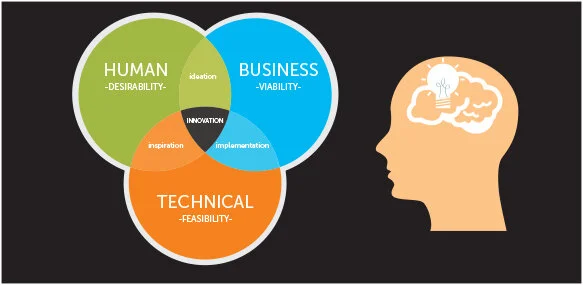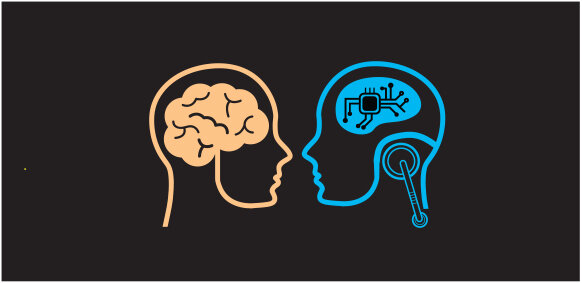Tools and approaches to help CX Designers and Product Owners approach emergent tech projects
In 1996 I designed and uploaded my first website to the world. I created the graphics. Designed the navigational structure. Wrote the html and managed to work out how to upload it to the fairly uninhabited internet.
Returning to the present when I contemplate the processes, people, technology, artefacts and thinking that goes into the creation of any digital initiative, I’m exhilarated and bewildered by just how complex things have become.
The complexity is increasing with the infiltration of Artificial Intelligence. Pondering about what I need to learn next, I’m considering what has changed, what stays the same and what the new focus for design should be.
Unsurprisingly, just like those first websites, people question what designers do on AI projects. After all aren’t they a “data scientist thing” made up of algorithms and large data sets?
Let’s consider consider the impact design has in the creation and the role designers need to play in AI projects.
Ensure technology is an enabler, not a solution in itself: Balancing human and business needs and goals
Focus on the problem and jobs to be done: Working with users to identify their needs and pain points in order to understand the true value that your product needs to provide.
Consider emotional impact: Designing with empathy and considering the emotional and psychological impact on people.
Plan for impact: Future proofing the emotional and social impact of technologies by predicting the results of negative consequences.
Look beyond the interface & design the entire experience: Connect every brand touchpoint into a seamless and well orchestrated experience
Ensure technology is an enabler, not a solution in itself
Balancing human and business needs and goals
Diving straight into the adoption of new technologies is exciting and also risky. According to Gartner only 3 out of 20 AI projects will succeed in 2019. Whilst there are a variety of reasons for this, in my experience, many organisations don’t have a clear understanding of what AI can do for them. This results in misalignment to the business problems that might be solved with AI.
The eagerness to be early adopters and experiment with new shiny technology, typically results in a tech first approach rather than people first approach. Also often overlooked is the fact that businesses exist to provide products and services that fulfill needs, desires, entertainment or information.
Just like any other technology, AI should be the enabler not the driver of a solution. Initiatives should be based on business value, augmenting and streamlining roles, or providing better customer experiences.
Some tips on how to do this...
Define the problem to solve and evaluate whether an AI approach is an appropriate solution.
Gain an understanding of how “AI ready” your stakeholders are. They may need some education around the benefits of AI and examples of its application within the industry and problem space.
Apply design thinking to your AI projects. Balancing desirability, viability and feasibility.
Focus on the problem and jobs to be done
Working with users to identify their needs and pain points in order to understand the true value that your product needs to provide.
According to the Databricks trend report, 96% of organisations say data-related challenges are the most common obstacle when moving AI projects to production.
Whilst lack of data, too much unstructured data or poor quality data affects many AI initiatives, I don’t believe that it is the biggest reason that is affecting the success of AI projects.
The reasons for failure are the same reasons why so many other projects that have nothing to do with AI struggle. They fail because they don’t clearly understand the value that they are bringing to their target users. They are unable to clearly articulate the jobs-to-be-done, what the user seeks to accomplish or their pain points. These requirements need to be based on validated user research and not just assumptions made by the business.
Some tips on how to do this...
Co-creatively define all the problems and challenges. Prioritise them in terms of customer and business value. Delve deeper into each problem to determine if an AI based solution is the best approach.
Conduct user research to uncover pain points, needs and opportunities.
Identify all the jobs-to-be-done of your target users.
Delve into the problems of internal users as well as end customers. A great customer experience has flow on effects if internal processes are not optimised. AI has many applications in the back-stage and can be applied to augment staff and streamline internal processes.
If the problem is in fact based on ‘Data’:
Explore additional data related touch points or create new channels from which to gather data.
Clean and categorise data, prioritised into data groups. Focusing on the data will actually add value.
Stop collecting data just because you “might” need it.
Consider emotional impact
Designing with empathy and considering the emotional and psychological impact on people.
Technology has had a tremendous effect on all of us. It has changed the way we work, live, communicate, shop, and spend our free time and how we interact with one another. It has created new jobs that we never imagined could exist, and it’s made the world feel a little less distant. It has also had unfathomable effects on our psychological and emotional make up.
When it comes to AI enhanced products and services, we need to ensure that we’re considering the emotional impact across customers, internal stakeholders and the actual system itself.
Some basic questions that should be explored include:
1- The Customer / external user:
What is the emotional state that the user may be experiencing when interacting with your product or service?
Is the user aware that they are interacting with a non-human? How do they feel about this?
How will their privacy be respected?
2. The internal user / staff:
Do they understand what AI is and the benefits it could potentially offer?
What is the emotional impact on the internal users?
How will this impact their job? Will it augment it or replace it?
3. The system:
What emotions does the system need to simulate to allow people to interact with it more effectively?
Does the system promote diversity? Is it representative of all people and cultures without bias and discrimiation?
Some tips on how to do this...
Use empathy maps and research based personas to help the team see the world through the lense of their target users.
When creating a chatbot, clearly define it’s personality traits and values. Set the tone of conversation and language it uses to interact with people.
Collaboratively articulate problems and come up with solutions with end users.
Use research methods to understand your target users mindsets and needs.
Create user journeys that capture their interactions as well as their thoughts, feelings and each digital and non digital touchpoints.
Establish a set of ethical guidelines for the team to follow.
Plan for impact
Future proof the emotional and social impact of technologies by predicting the results of negative consequences.
It’s impossible to predict the future. However, there are a few things we can do to plan for the impact of change. Research can help analyse and predict the social and emotional impact of technologies. The results of that research can be used in constructive planning to educate and support AI initiatives.
If possible, implement predictive analytics to monitor bias in design, development, deployment and production. Identify unintended outcomes for correction. It is important to monitor how the system affects users to adapt and pivot quickly to reduce or remove negative impacts.
Some tips on how to do this...
Scenario planning to include envisioning the future and possible user impacts.
Develop positive and negative hypothetical impact scenarios for what might be.
Keep an eye on forecasts and trends.
Learn from historical happenings and failures.
Use predictive analytics to analyse historical data and predict future events.
Testing for the negative consequences.
Look beyond the interface & design the entire experience
Connect every brand touchpoint into a seamless and well orchestrated experience
The evolution of digital design has changed the way we design products. Instead of focusing on a single interface like a website or mobile app, we now need to consider the vast array of touchpoints that users interact with. Each touchpoint is typically treated as a unique product which is often isolated from other product teams who manage a different touchpoint. This is perhaps one of the biggest mindshifts that designers and product owners grapple with and also a major pain point for customers who experience inconsistent experiences when interacting with a brand.
For some brands this includes experiences across both digital and non digital connections across a variety of devices. From the tiny screen on a smartwatch, mobiles, tablets, desktops to text messages. Also to consider are conversations with chatbots, call centers and in-person interactions with service representatives in physical environments. For physical spaces the design of flows, use of space, ambience, signage, furnishings, sound and even smell to immerse customers in a unique branded experience.
It’s a lot to take in and consider. The challenge is in the synchronisation of the different teams that work towards creating that cohesive and consistent user experience and ensuring that the variety of entry points that people have with these touchpoints is consistent and meeting their needs.
AI is already seamlessly weaving its magic into personalized experiences which will only get better and better as it gains richer insights into what we need and like. The design and implementation of AI systems across multiple touchpoints needs to carefully considered to ensure that customers experience engaging, delightful and memorable experiences across a seamless and well orchestrated experience.
When it comes to AI implementations it’s important that we design considerations around user mindsets, their cultural background, their emotional state, their location and situation, the time of day and cadence of usage in order to create smarter products.
Some tips on how to do this...
Apply a systems thinking approach to your project.
Identify and draw out all the different touch points as a physical artefact with the team.
Map the different user experiences for different types of users.
Set a clear goal and vision.
Ensure everyone is aligned and working towards solving the right problem.
Map the user journeys and user flows that different personas experience.
Conduct user research to understand users behaviour, needs and pain points.
Artificial Intelligence is redefining the role of designers and product owners, however many of the tried and tested tools and methods that we’ve been utilising still apply. Now more than ever we need to apply a human centered approach to everything that is created, so that we can ensure products are built ethically and purposefully to enable us to work more effectively and live more fulfilling lives.






